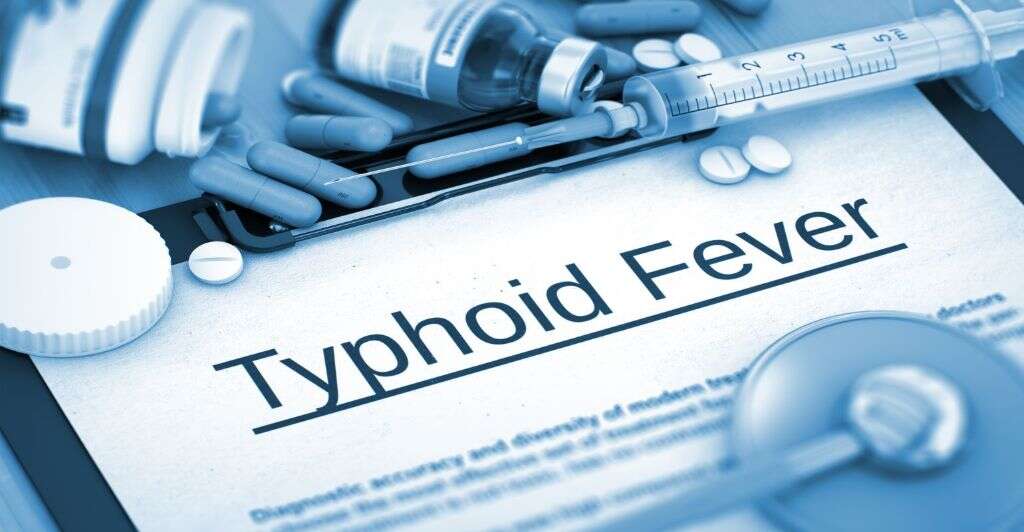What Is Typhus Fever?
If you go to certain parts of the world then you will need to take certain precautions to make sure you don’t fall ill. There are some diseases that are relatively common in some locations on the planet, even if those diseases are rare elsewhere. There are various reasons for this, one of which is poor hygiene standards.
Typhoid fever is one example of such a disease. It can usually be treated but it can also be very serious in some cases. It is best to take all practical precautions against the disease if you expect to be in a part of the world where it is prevalent.

1. Typhoid Fever
Typhoid fever is a disease that was dangerous throughout much of the world in the past, including nations in the west. It has become less common as many countries have advanced, but it is still prevalent in some parts of the world. The disease presents a very real threat to many people in developing nations.
Typhoid fever is usually treatable and it may take just a few days of treatment before the patient improves. It can still be fatal in a small number of cases, however, so it should always be taken seriously. The disease is caused by an infection from a certain type of bacterium.

2. Causes
The bacteria responsible for typhus fever is salmonella typhi. It is not the same bacteria that is responsible for salmonellosis, which is caused by salmonella enterica and salmonella bongori. The salmonella typhi bacterium is spread to other people through the fecal matter of infected people.
In areas where hygiene standards are low, typhus fever can be spread from infected food and water. People in certain areas are often taught about the need for sanitary standards in order to help prevent the spread of disease like typhus fever. Some people can be carriers of the disease and can spread it to others, while showing no symptoms of the disease themselves.

3. Early Symptoms
The symptoms of typhus fever will not usually come on suddenly. They will often not appear for around 1 to 3 weeks after the initial infection, and they will then develop gradually. When symptoms do start showing they are likely to include a headache, while a fever is also likely. The fever is likely to worsen as the disease progresses.
Other symptoms include muscle aches and pains, while the patient can also feel fatigued. Abdomen pain is also likely and the patient’s abdomen may become very swollen. Patients can also have constipation or diarrhea, and many will begin to lose weight and lose their appetites. A cough is also often present, as is a rash.

4. Typhoid State
If typhus fever is not treated then it can go on to show more serious symptoms. One of these symptoms is the typhoid state. Patients in this condition will lay still for long periods of time with their eyes half open. Some patients with typhus fever will also experience delirium.
The typhoid state is also sometimes known as ‘coma vigil’, and ‘muttering delirium’. The patient might also pick at imaginary objects and at their bed clothes, and muscle twitching is also common. It is a clear sign that the disease has progressed to a dangerous stage, while it can also be caused by some other disease.

5. Intestinal Bleeding
At around the 3rd week of being ill, the patient can develop another serious complication: intestinal perforations. This is the medical term for when a hole appears in the large bowel or small intestine. This is very problematic because it means that the contents of the digestive system can leak out into the abdominal cavity.
When this happens, the patient is likely to start experiencing nausea and vomiting. They can also begin to experience severe pain in the abdomen area, while the patient’s bloodstream can also become infected. Intestinal perforations are a life-threatening condition so the patient must be treated accordingly as soon as possible.

6. Other Complications
Other potentially severe conditions include pneumonia, and some patients will also experience septic shock. Meningitis is also a possibility, which is the inflammation of the tissue that help protect the brain and spinal cord. Bladder and/or kidney infections will also occur in some people, and some will also develop pancreatitis, which is the inflammation of the pancreas.
Another potential symptom is endocarditis, which is the inflammation of the heart’s lining. Myocarditis is another possibility, which is the inflammation of the heart’s muscle tissues. Patients can also experience paranoid psychosis and hallucinations. These conditions are potentially very dangerous and they will need to be treated as immediate medical emergencies.

7. Who’s at Risk
People that are most at risk of typhus fever are those that live in parts of the world where it is most common. This includes developing areas of the world such as Africa, South America, Southeast Asia, and India. People from developed countries that get typhus fever will usually have done so when travelling elsewhere in the world.
Children are also at a greater risk, although adults tend to have more severe symptoms when they get it. People that drink untreated water are also more likely to catch typhus fever, as are people that are likely to be around infected people.

8. Prevention
One of the most effective ways to prevent the spread of typhus fever is to maintain high safety standards. This means washing hands regularly, especially after using the bathroom and before preparing food. Hand sanitizers will give extra protection against bacteria.
When travelling in certain parts of the world, make sure to eat hot foods only. Also try and avoid eating food from street vendors. Raw fruits and vegetables should also be avoided in case they have been washed in contaminated water. Also try and avoid drinking any water that is not treated; bottled drinking water is usually the safest option.

9. Vaccines
If you are expecting to travel to a high-risk part of the world then you should make sure to get vaccinated first. These don’t offer complete protection so it is advisable to also take the other precautions already mentioned when you are travelling.
One type of the vaccine is taken orally and consists of four capsules. One capsule is to be taken every other day.
Another type of vaccine is a single injection that should be administered approximately 7 days before the date you are expecting to travel. Booster vaccinations will also be necessary to help ensure your immune system is able to combat the disease.

10. Treatment
As it is caused by a type of bacteria, typhus fever is treated by antibiotics. Depending on where you are in the world and your overall condition, ciprofloxacin is likely to be used. Azithromycin may be used instead if ciprofloxacin cannot be used, and this includes pregnant women.
Some strains have evolved a resistance to certain antibiotics and this is making it more complicated to treat the condition. In addition to treating the infection itself, it is also often necessary to treat the symptoms that might be caused by the disease. In some cases, this will mean surgery to help treat intestinal perforations.












